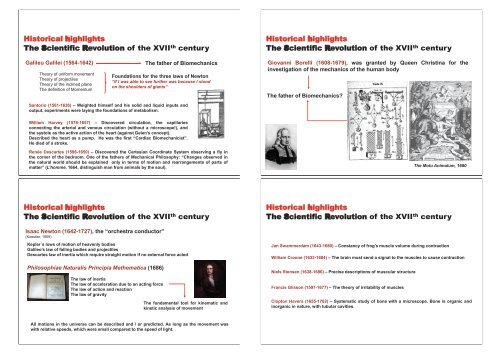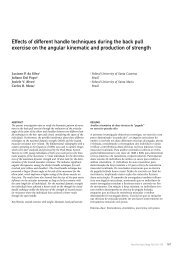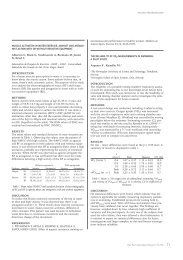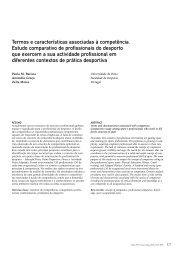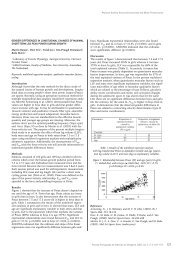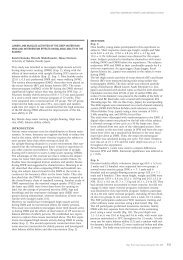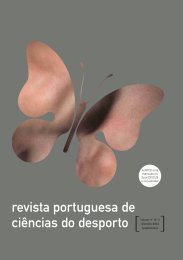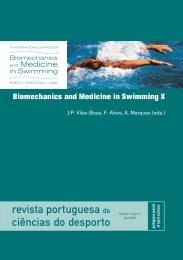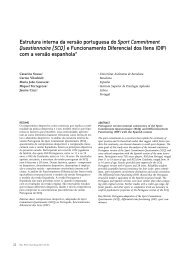Biomechanics
Biomechanics
Biomechanics
You also want an ePaper? Increase the reach of your titles
YUMPU automatically turns print PDFs into web optimized ePapers that Google loves.
Historical highlights<br />
The Scientific Revolution of the XVIIth century<br />
Galileu Galilei (1564-1642) The father of <strong>Biomechanics</strong><br />
Theory of uniform movement<br />
Theory of projectiles<br />
Theory of the inclined plane<br />
The definition of Momentum<br />
Foundations for the three laws of Newton<br />
“If I was able to see further was because I stood<br />
on the shoulders of giants”<br />
Santorio (1561-1636) – Weighted himself and his solid and liquid inputs and<br />
output, experiments were laying the foundations of metabolism.<br />
William Harvey (1578-1657) – Discovered circulation, the capillaries<br />
connecting the arterial and venous circulation (without a microscope!), and<br />
the systole as the active action of the heart (against Gelen’s concept).<br />
Described the heart as a pump. He was the first “Cardiac Biomechanicist”.<br />
He died of a stroke.<br />
Renée Descartes (1596-1650) – Discovered the Cartesian Coordinate System observing a fly in<br />
the corner of the bedroom. One of the fathers of Mechanical Philosophy: “Changes observed in<br />
the natural world should be explained only in terms of motion and rearrangements of parts of<br />
matter” (L’homme, 1664, distinguish man from animals by the soul).<br />
Historical highlights<br />
The Scientific Revolution of the XVIIth century<br />
Isaac Newton (1642-1727), the “orchestra conductor”<br />
(Koestler, 1959)<br />
Kepler´s lows of motion of heavenly bodies<br />
Galileo’s law of falling bodies and projectiles<br />
Descartes law of inertia which require straight motion if no external force acted<br />
Philosophiae Naturalis Principia Methematica (1686)<br />
The law of inertia<br />
The law of acceleration due to an acting force<br />
The law of action and reaction<br />
The law of gravity<br />
The fundamental tool for kinematic and<br />
kinetic analysis of movement<br />
All motions in the universe can be described and / or predicted. As long as the movement was<br />
with relative speeds, which were small compared to the speed of light.<br />
Historical highlights<br />
The Scientific Revolution of the XVIIth century<br />
Giovanni Borelli (1608-1679), was granted by Queen Christina for the<br />
investigation of the mechanics of the human body<br />
The father of <strong>Biomechanics</strong>?<br />
The Motu Animalum, 1680<br />
Historical highlights<br />
The Scientific Revolution of the XVIIth century<br />
Jan Swammerdam (1643-1680) – Constancy of frog’s muscle volume during contraction<br />
William Croone (1633-1684) – The brain must send a signal to the muscles to cause contraction<br />
Niels Stensen (1638-1686) – Precise descriptions of muscular structure<br />
Francis Glisson (1597-1677) – The theory of irritability of muscles<br />
Clopton Havers (1655-1702) – Systematic study of bone with a microscope. Bone is organic and<br />
inorganic in nature, with tubular cavities.


